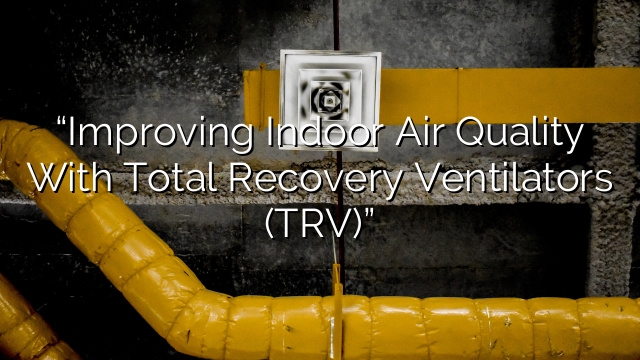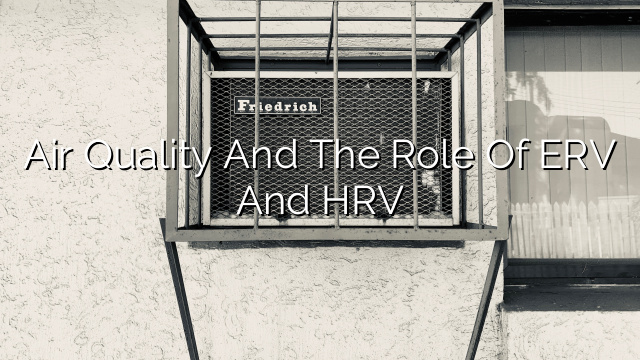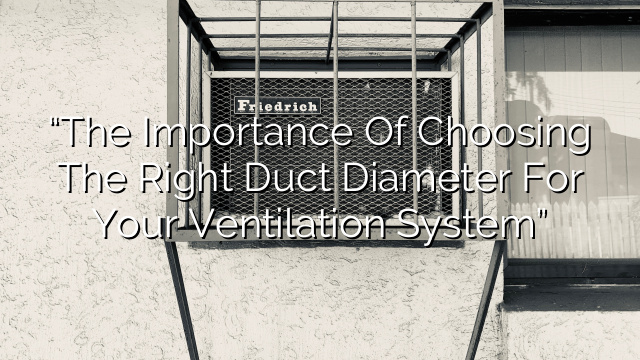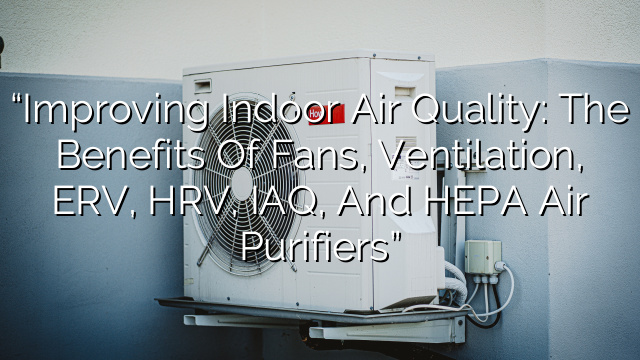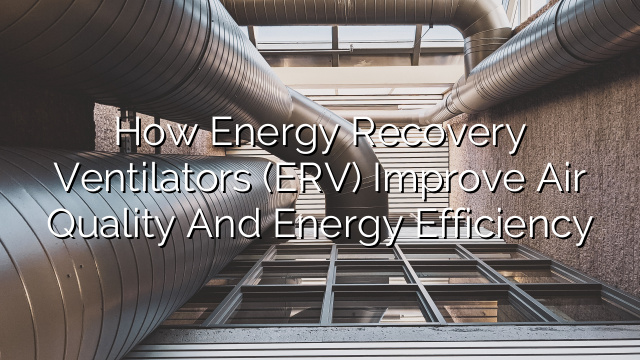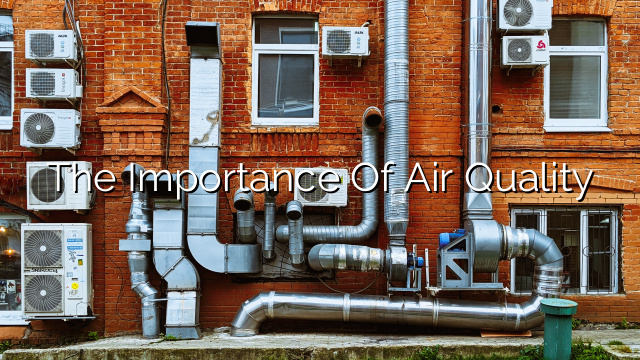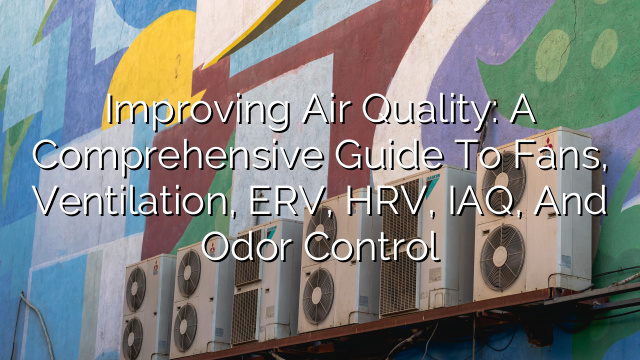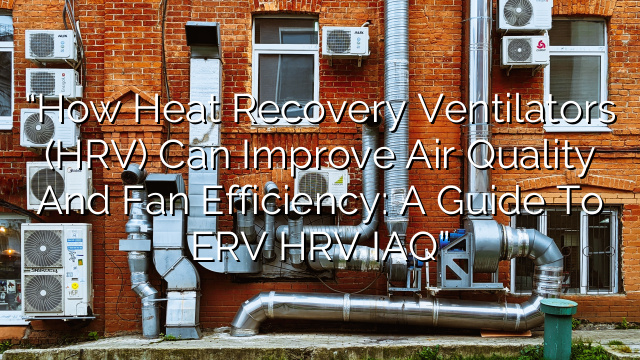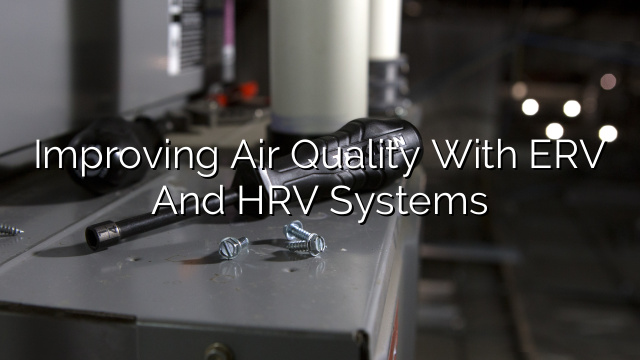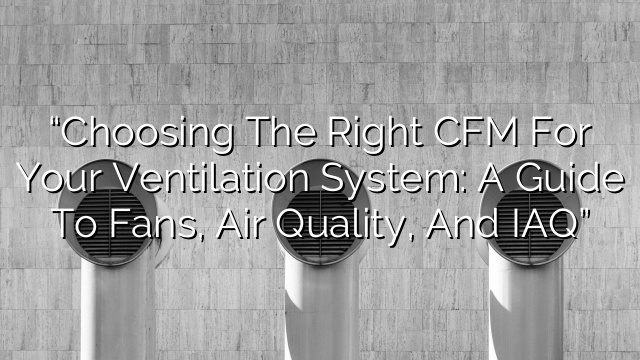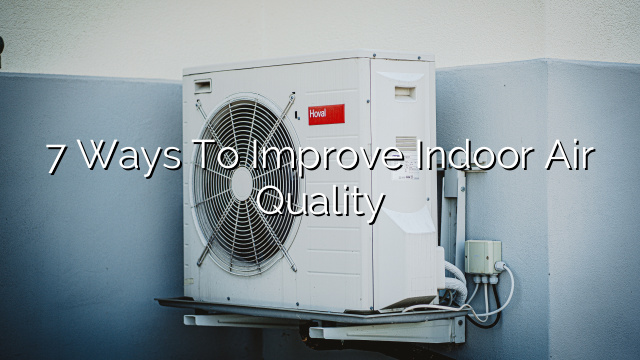Introduction
Many people spend the majority of their time indoors, whether it’s at home, in the office, or at school. However, what most people don’t realize is that the air indoors can be even more polluted than the air outdoors. Indoor air pollution can have a negative impact on our health, leading to respiratory problems, allergies, and other health issues.
Air ventilation is crucial in maintaining good indoor air quality. Ventilation helps to remove odors, moisture, and pollutants from indoor spaces, ensuring that the air we breathe is clean and fresh. There are various ventilation systems available on the market, including Total Recovery Ventilators (TRV), which are designed to improve indoor air quality by recovering energy from the air being ventilated.
The Importance of Ventilation and Air Quality
Ventilation is vital in any building, whether it’s a residential property or a commercial space. It helps to control the temperature, remove pollutants, and reduce the risk of condensation and mold growth. Good indoor air quality is not only important for comfort but also for our health and well-being.
Poor indoor air quality can have various negative effects on our health. It can trigger asthma attacks, cause allergies, and lead to respiratory infections. Long-term exposure to indoor air pollutants can also increase the risk of developing respiratory diseases, cardiovascular diseases, and even certain types of cancer.
Understanding Total Recovery Ventilators (TRV)
Total Recovery Ventilators (TRV) are advanced ventilation systems that are designed to improve indoor air quality while minimizing energy losses. These systems feature heat exchangers that recover thermal energy from the air being exhausted, which is then transferred to the incoming fresh air. This process helps to reduce heating and cooling costs by pre-conditioning the incoming air to the desired temperature.
TRV systems are particularly effective in climates with extreme temperatures, as they help to regulate the indoor temperature while ensuring a constant supply of fresh air. They are also beneficial in tightly sealed buildings that lack natural ventilation, as they provide a controlled and efficient way of introducing fresh air.
The Benefits of Total Recovery Ventilators
- Improved Indoor Air Quality: TRV systems help to remove pollutants, allergens, and odors from indoor spaces, ensuring that the air we breathe is clean and fresh. This is particularly important for individuals with allergies, asthma, or other respiratory conditions.
- Energy Efficiency: By recovering thermal energy from the exhausted air, TRV systems help to reduce heating and cooling costs. They pre-condition the incoming air, reducing the load on the HVAC system and making it more energy-efficient.
- Regulated Humidity Levels: TRV systems also help to regulate indoor humidity levels by removing excess moisture from the air. This helps to prevent mold growth, reduce the risk of condensation, and improve overall indoor comfort.
- Noise Reduction: TRV systems are designed to operate quietly, ensuring minimal noise disturbance in indoor spaces. This is especially important in residential areas, where noise pollution can negatively impact quality of life.
Installation and Maintenance
Installing a Total Recovery Ventilator (TRV) system requires professional expertise. It is important to have the system installed by a qualified HVAC technician to ensure proper functionality and optimal performance.
Maintenance of TRV systems typically involves regular filter replacement and cleaning of the heat exchanger. It is recommended to follow the manufacturer’s guidelines for maintenance and schedule regular inspections to keep the system running efficiently.
FAQs
1. What is the difference between HRV and ERV?
HRV stands for Heat Recovery Ventilation, while ERV stands for Energy Recovery Ventilation. The main difference between the two is the way they handle moisture. HRV systems transfer heat only, whereas ERV systems transfer both heat and moisture.
2. How often should I replace the filters in my TRV system?
The frequency of filter replacement depends on various factors, such as the type of filter used, the level of air pollution in the area, and the manufacturer’s recommendations. As a general guideline, it is recommended to replace the filters every 3 to 6 months.
3. Can I install a TRV system myself?
Installing a TRV system requires professional expertise. It is recommended to hire a qualified HVAC technician to ensure proper installation and optimal performance of the system.
4. How much does a TRV system cost?
The cost of a TRV system can vary depending on various factors, such as the size of the building, the complexity of the installation, and the brand of the system. It is best to consult with an HVAC professional to get an accurate estimate for your specific needs.
5. Can a TRV system be installed in an existing building?
Yes, TRV systems can be installed in existing buildings. However, the installation process may be more complex and may require modifications to the existing HVAC system. It is advisable to consult with an HVAC professional to assess the feasibility of installing a TRV system in your building.
6. Are TRV systems noisy?
No, TRV systems are designed to operate quietly, ensuring minimal noise disturbance in indoor spaces. The noise level can vary depending on the specific model and installation, but in general, TRV systems are known for their quiet operation.

